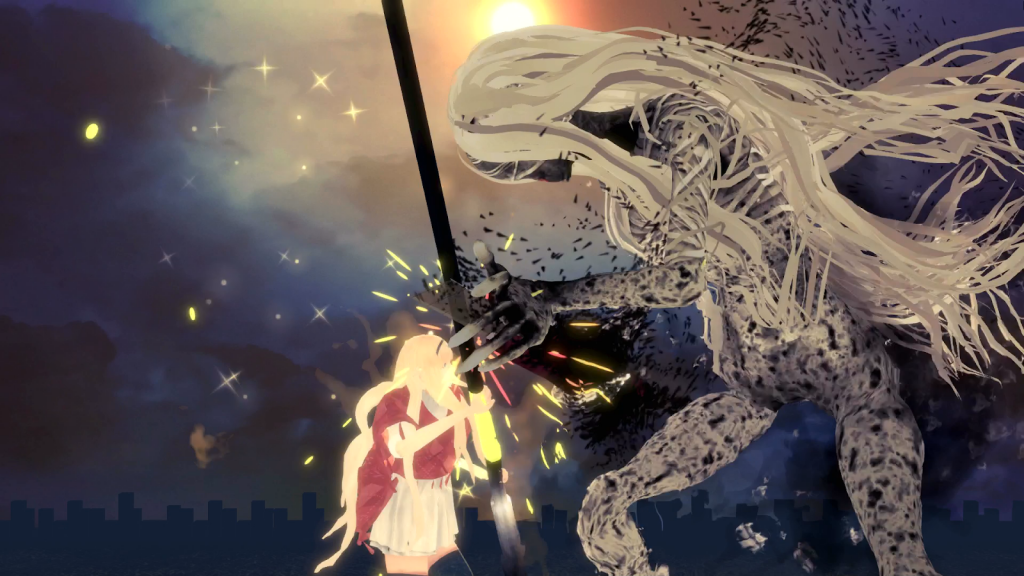How The Missing combines survival horror and puzzle platforming to capture queer hope
Survival horror, as a subgenre, is meant to make you feel powerless. Resident Evil adds extra stress to already terrifying situations by forcing you to manage your inventory and make judgement calls about what will be most valuable to your continued existence. Outlast takes this even further by stripping away your ability to fight back. The illusion of safety provided by a handgun or knife is taken from you and it becomes a breathless struggle to stay alive when the only verbs available to you are run and hide. The Missing: JJ Macfield and the Island of Memories from developer White Owls takes this notion and manages to make it more frightening yet more hopeful through its use of puzzle platforming mechanics.
In The Missing, you play as JJ, a young woman lost on an island, searching for her friend, Emily. To advance through the island, JJ has to solve a series of macabre puzzles, usually physically tearing herself apart by using parts of the environment to make progress. This adds a new dimension to non-combat survival horror. Now, there is no hide option, even when you’re being pursued by a truly frightening monster. Instead, your main options become running, and more prominently, destroying your body to make your way past various traps like giant saws, mechanical, knife-wielding spiders, and even giant cymbal monkeys.
By taking away the ability to hide or sneak around enemies and obstacles, The Missing leaves you feeling constantly vulnerable. No matter what you do, you’re exposed. The puzzle-platforming mechanics lean into this feeling of exposure by forcing you to traverse dizzying heights and unbelievably sinister puzzles in the open. Efficient traversal is key, especially in sections where you’re on the run. Without the safety of ducking out of a line of sight, the ability to run away as quickly and safely as possible becomes more valuable.
Even when you’re not being pursued, the game’s core mechanic of destruction and rejuvenation creates a constant weariness. Though the art is purposefully fairly tame when it comes to gore, the sound design is brutal. Every cracking bone and agonized scream is like a punch in the gut There’s never really a chance to relax or feel at ease in The Missing, because even when you aren’t being chased by some hulking beast, there’s always the lingering knowledge that some fresh, horrible way to mutilate yourself is waiting just ahead. It makes playing uncomfortable, even unbearable at times, because it’s nonstop. There are no safe rooms to take a breath in; it’s just the endless stretch of the island.
However, it’s these exact qualities that actually allow The Missing’s approach to survival horror to lend more agency to the player than others of its ilk. While it’s truly awful to listen as JJ’s limbs are severed from her body so she can weigh down platforms with them, or crawl underneath suspended blades, it also gives a feeling of control over the eventual outcome other games in the genre lack.
I know no matter what, I’ll be able to make progress, because ultimately, it’s my body on the line. I don’t have to cringe in a locker, waiting for whatever supernatural predator is hunting me to lose interest and move on. Progress is tied to the player’s ability to solve puzzles, and with the exception of sections where JJ is being pursued, there’s no real time limit. It may be awful to hear and see JJ destroy herself over and over again as you try to work out a solution, but running out of time is never really a stressor.
What’s more, because it’s a platformer, the game is divided into discrete levels so it’s easy to complete one and take a break if you need to. It’s easier to disengage, knowing you’ve completed one level and don’t have to start the next if you don’t want to, as opposed to SOMA or Outlast, where the exploration makes environments much more broad and uncertain.
Given the core of JJ’s story, these modes of progression are important and impactful. The self-mutilation she must endure to progress is emblematic of how queer people, particularly trans folks, are often treated in society. It can feel like you have to endure extreme pain, or make yourself small, to survive. Trans people are also at a significant risk of experiencing real-life violence. But there’s definitely hope in this game as well, which separates it from its contemporaries.
Most survival horror doesn’t leave room for happy endings. The outcomes, even if the protagonist survives, are often bleak or at the very least, melancholic. The Missing manages to take all of the horror, pain, and stress that JJ has been feeling, and validate it — it shows how negatively it’s impacted her in the form of the mindscape, but the ending still expresses that there can be a light at the end of the tunnel. Ultimately, even though JJ’s mother (and even her classmates) has caused her great harm through their reactions to her transness, there’s still someone there that loves and accepts JJ for exactly who she is.
This love and acceptance is at the heart of the game, and what brings everything together. Emily is, after all, the whole reason JJ is so determined to explore the Island and make her way through. When it’s revealed the Island is actually a sort of mindscape where JJ is processing the trauma of her suicide attempt and the events leading up to it, this recontextualizes everything that came before. Even in the throes of death, JJ still knows Emily cares about her and is determined to find her.
Through this, White Owls managed to balance conveying how truly horrifying the world can be for queer and trans folks, while still showing they’re not the monsters. Yes, JJ has to brutalize herself if she wants any hope of survival, and she’s basically a magical zombie, but that’s not her fault. The game never portrays her as the bad guy, or as something lesser. Instead, her resurrections are a powerful, if gruesome gift. An adaptation that’s not monstrous, but necessary in an environment built with her destruction in mind.
The Missing uses its survival horror platforming to show demonstrate a common lived experience of many queer and trans people: a world that is openly hostile towards us, one where the threat of violence more often than not is a promise, and the family you were born into may not be as supportive or empathetic as they should be. But it also manages to convey the very real joy that can come from queer experience. The safety of found family, the joy of a partner who really loves and accepts you for who you are, finding the courage, or being pushed, to be your authentic self, despite those who are howling for your blood.
JJ’s survival of trials on the island, and her determination to keep going, even once she’s hit rock bottom is revolutionary. No matter what is thrown at her, no matter how frightening things may be, JJ is powerful because on the island she cannot die, but in her reality, she refuses to.









